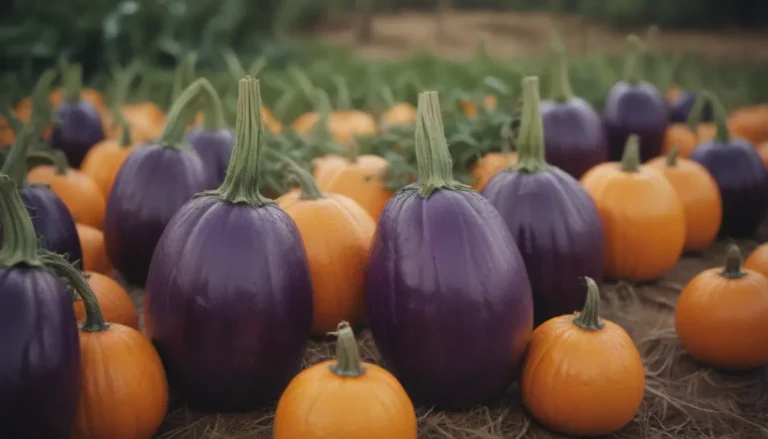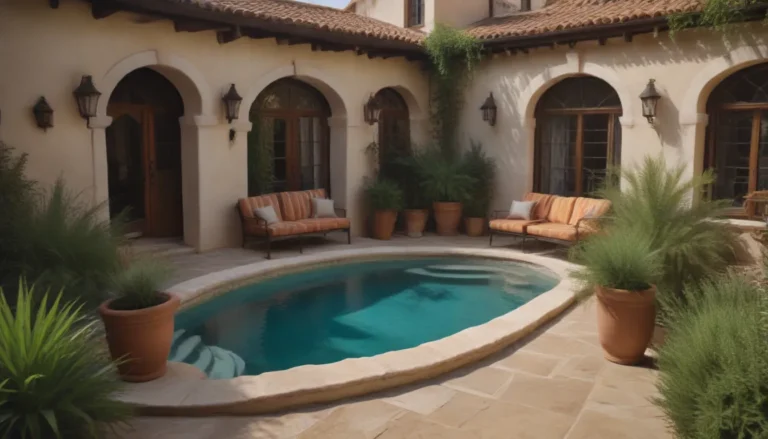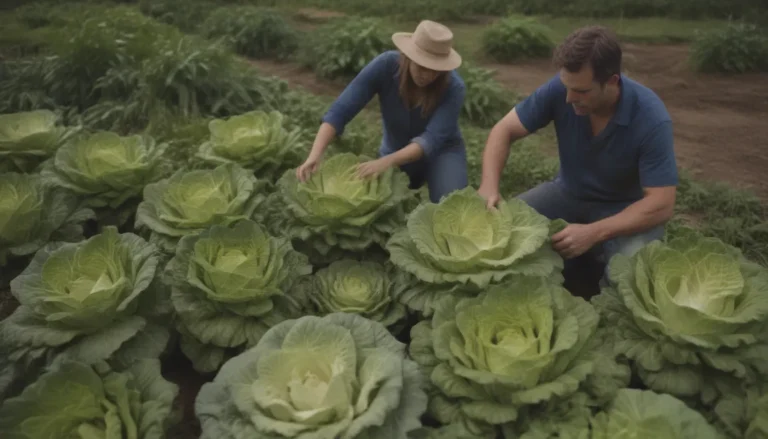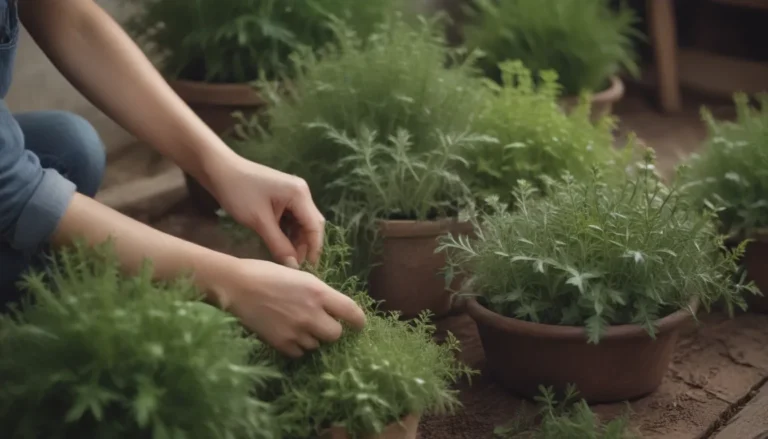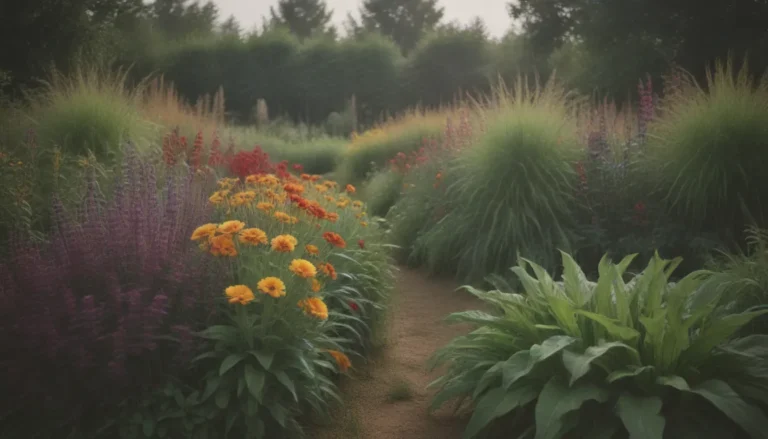The Ultimate Guide to Shade Gardening: 30 Best Perennial Flowers
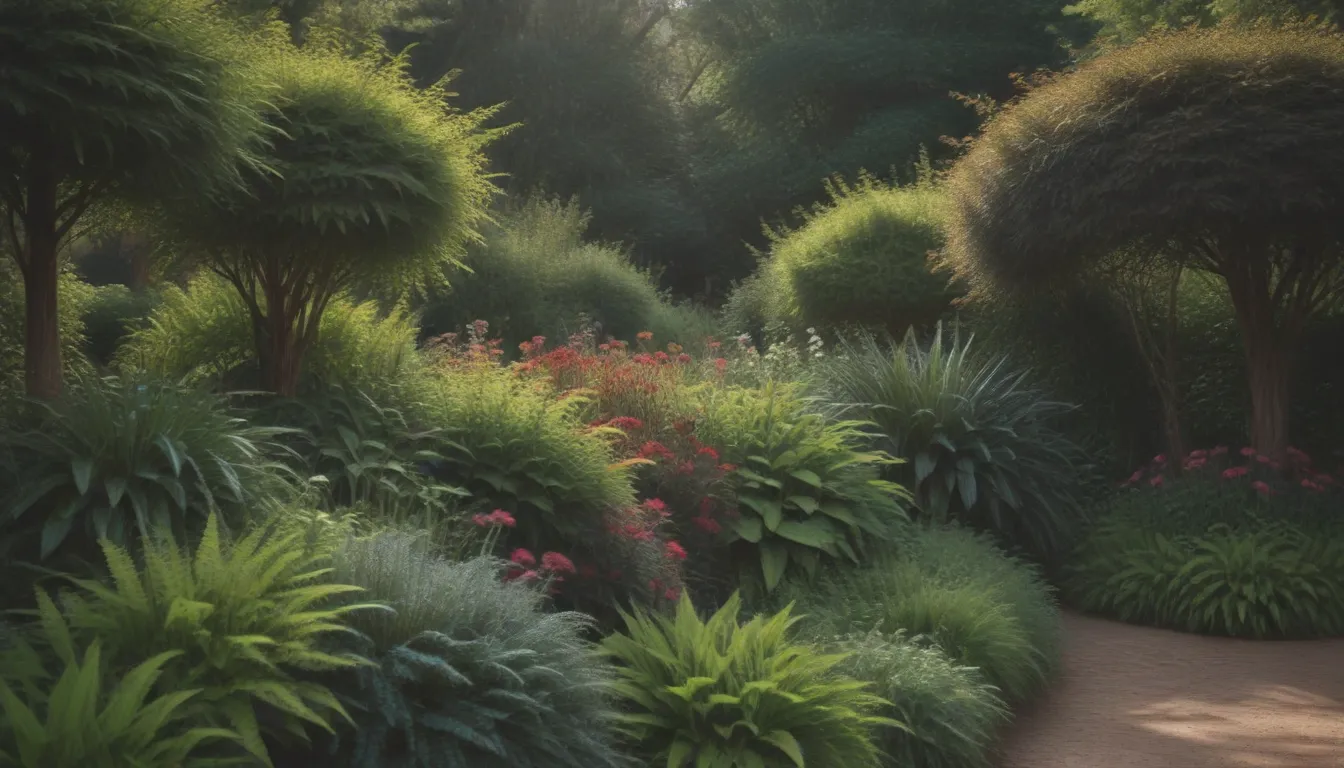
Are you tired of thinking that a shady garden means limited flower options? Do you want to add some color and life to those darker corners of your yard? Well, you’re in luck! Shade gardening doesn’t have to be dull and boring. In fact, there are plenty of perennial flowers that thrive in partial to full shade, bringing beauty and vibrancy to your outdoor space.
In this comprehensive guide, we’ll explore 30 of the best perennial flowers for shade gardens. From Monkshood to Copper Iris, we’ll cover a wide range of plants that can brighten up even the darkest corners of your yard. So grab your gardening gloves and let’s dive in!
Monkshood
Monkshood is a stunning perennial flower that thrives in both full sun and partial shade. With deep purple-blue blooms that last for up to two months in late summer, this plant adds a pop of color to your shady garden. Monkshood is resistant to pests and diseases, making it a low-maintenance option for your outdoor space.
- Name: Monkshood
- USDA Hardiness Zones: Varies
- Color Varieties: Deep purple-blue
- Sun Exposure: Full sun to partial shade
- Soil Needs: Well-drained
Columbine
Attract butterflies and hummingbirds to your garden with Columbine. These delicate flowers come in a wide variety of colors and are easy to grow in shade. With blooms in late spring and early summer, Columbine adds a touch of whimsy to your outdoor space.
- Name: Columbine
- USDA Hardiness Zones: Varies
- Color Varieties: Various
- Sun Exposure: Shade
- Soil Needs: Well-drained
False Spirea (Astilbe spp.)
False Spirea, also known as Astilbe, blooms in shades of white, pink, purple, and red in the spring and summer. This plant thrives in part shade but can also tolerate full sun or full shade. With minimal effort required, False Spirea is a great option for adding color to your shady garden.
- Name: False Spirea
- USDA Hardiness Zones: Varies
- Color Varieties: White, pink, purple, red
- Sun Exposure: Part shade to full shade
- Soil Needs: Moist
Black Cohosh
Black Cohosh, also known as Bugbane, is a perfect perennial flower for shade gardens. With bottle brush-shaped clusters of white flowers that bloom in late summer to early fall, this plant adds height and texture to your outdoor space. Situate it in a sheltered spot to prevent damage from strong winds.
- Name: Black Cohosh
- USDA Hardiness Zones: Varies
- Color Varieties: White
- Sun Exposure: Shade
- Soil Needs: Well-drained
Bleeding Heart
Bleeding Heart is a spring bloomer that thrives in deep shade. With delicate heart-shaped flowers in shades of pink with white tips, this plant adds a romantic touch to your garden. Keep its soil evenly moist throughout the growing season for best results.
- Name: Bleeding Heart
- USDA Hardiness Zones: Varies
- Color Varieties: Pink with white tips
- Sun Exposure: Deep shade
- Soil Needs: Moist
Barrenwort
Don’t underestimate Barrenwort as just a ground cover. This plant brings visual interest to your landscape with vivid flowers that emerge in early spring. Tolerating full shade but blooming best in partial shade, Barrenwort is a versatile option for shady areas.
- Name: Barrenwort
- USDA Hardiness Zones: Varies
- Color Varieties: Various
- Sun Exposure: Full shade to partial shade
- Soil Needs: Well-drained
Primrose
One of the first flowers to bloom in spring, Primroses add a burst of color to your garden. With dozens of varieties available, you can choose the perfect shade-loving plant for your outdoor space. Ideal for shady areas, Primroses require at least partial shade once temperatures warm up.
- Name: Primrose
- USDA Hardiness Zones: 3
- Color Varieties: Various
- Sun Exposure: Partial shade
- Soil Needs: Well-drained
Meadow Rue
Meadow Rue features lacy foliage at its base, with fuzzy flowers that rise above in late spring to summer. While it can tolerate full sun, this plant prefers a spot with dappled shade. Low-maintenance and beautiful, Meadow Rue is a great addition to your shade garden.
- Name: Meadow Rue
- USDA Hardiness Zones: Varies
- Color Varieties: Various
- Sun Exposure: Dappled shade
- Soil Needs: Well-drained
Lungwort
Known for its foliage and flowers, Lungwort blooms in the spring with pink flowers that mature to blue. This plant prefers partial shade to prevent foliage burn or wilting in full sun. With evenly moist, well-drained soil, Lungwort is a great choice for shady areas.
- Name: Lungwort
- USDA Hardiness Zones: Varies
- Color Varieties: Pink to blue
- Sun Exposure: Partial shade
- Soil Needs: Well-drained
Siberian Bugloss
Siberian Bugloss, a close cousin of forget-me-nots, is a clump-forming perennial flower that thrives in shade. With blue flowers in April and May, this plant adds a pop of color to your garden. Plant it in dappled shade to prevent foliage scorching.
- Name: Siberian Bugloss
- USDA Hardiness Zones: Varies
- Color Varieties: Blue
- Sun Exposure: Dappled shade
- Soil Needs: Well-drained
Virginia Bluebells
Native wildflowers, Virginia Bluebells are excellent for shady woodland gardens. Producing clusters of trumpet-shaped blue flowers in March and April, this clump-forming plant adds beauty to your outdoor space. Overplant them with ferns or hostas to fill in the gaps once their foliage goes dormant.
- Name: Virginia Bluebells
- USDA Hardiness Zones: Varies
- Color Varieties: Blue
- Sun Exposure: Partial shade to full shade
- Soil Needs: Well-drained
Solomon’s Seal
With dainty, white fairy bells hanging from graceful stems, Solomon’s Seal adds elegance to your shade garden. Growing up to six feet tall, this plant blooms in early to mid-spring and features attractive foliage throughout the summer. Be aware that all parts of Solomon’s Seal are mildly toxic.
- Name: Solomon’s Seal
- USDA Hardiness Zones: Varies
- Color Varieties: White
- Sun Exposure: Shade
- Soil Needs: Well-drained
Hosta
Known for their decorative foliage, Hostas come in a variety of leaf variations and flower colors. Blooming in mid-summer, these plants are ideal for shady areas where other plants struggle to grow. Toxic to cats and dogs, Hostas serve as both ground covers and fillers in your garden.
- Name: Hosta
- USDA Hardiness Zones: Varies
- Color Varieties: Various
- Sun Exposure: Shade to partial shade
- Soil Needs: Moist
Hellebore
Hellebore adds winter and spring bloom to your shade garden. Flowers can appear as early as Christmas in some zones, making it a great choice for year-long interest. With evergreen foliage and a clumping habit, Hellebore prefers shade in the summer and sun in the winter for optimal growth.
- Name: Hellebore
- USDA Hardiness Zones: Varies
- Color Varieties: Various
- Sun Exposure: Shade in summer, sun in winter
- Soil Needs: Well-drained
Lily of the Valley
The spreading habit of Lily of the Valley makes it an attractive ground cover for shady areas. With fragrant, nodding blooms in May, this plant adds a touch of elegance to your garden. Ensure it stays well-watered and divide it to control spread in your outdoor space.
- Name: Lily of the Valley
- USDA Hardiness Zones: Varies
- Color Varieties: White
- Sun Exposure: Shade
- Soil Needs: Well-drained
Toad Lily
Toad Lily stands out in the fall shade garden with its purple spotted petals and striking appearance. Blooming in the fall, this plant features unique foliage and colorful flowers that add interest to your outdoor space. Toxic to pets, Toad Lily is a beautiful yet cautious choice for your garden.
- Name: Toad Lily
- USDA Hardiness Zones: Varies
- Color Varieties: Purple
- Sun Exposure: Shade
- Soil Needs: Well-drained
Spotted Dead Nettle
With silvery leaves and bell-shaped, spotted flowers, Spotted Dead Nettle is a popular ground cover for shade areas. Blooming from late spring through fall, this plant can be evergreen or semi-evergreen, depending on your climate. Be mindful of its invasive nature in some states before planting.
- Name: Spotted Dead Nettle
- USDA Hardiness Zones: Varies
- Color Varieties: Pink
- Sun Exposure: Shade
- Soil Needs: Well-drained
Corydalis
Featuring spikes of tubular blooms above lacy foliage, Corydalis is a short-lived perennial that self-seeds readily. Butterflies are attracted to the colorful flowers, making Corydalis a beautiful option for shady areas. Ensure it has enough space to spread and thrive in your garden.
- Name: Corydalis
- USDA Hardiness Zones: Varies
- Color Varieties: Various
- Sun Exposure: Shade
- Soil Needs: Well-drained
Spiderwort
Spiderwort’s unique three-petaled flower clusters atop tall stems make it a standout in the shade garden. Blooming from late spring through mid-summer, this plant self-seeds readily and forms clumps similar to lilies. With a clumping habit and stunning flowers, Spiderwort is a beautiful addition to your garden.
- Name: Spiderwort
- USDA Hardiness Zones: Varies
- Color Varieties: Various
- Sun Exposure: Shade
- Soil Needs: Well-drained
Vinca Minor
As a dependable shade plant, Vinca Minor is an evergreen vining plant that establishes rapidly as a ground cover. With five-petaled flowers blooming in early spring and sporadically throughout the season, Vinca Minor adapts easily to different soil types. However, be cautious as it can be invasive in certain regions.
- Name: Vinca Minor
- USDA Hardiness Zones: Varies
- Color Varieties: Various
- Sun Exposure: Shade
- Soil Needs: Well-drained
Indian Pink
Native to the eastern and southeastern U.S., Indian Pink is a striking wildflower that attracts hummingbirds and pollinators. With vibrant red throats and bright yellow star-shaped petals, this plant spreads nicely in small clumps. Blooming from mid-spring to early June, Indian Pink adds color and life to your garden.
- Name: Indian Pink
- USDA Hardiness Zones: Varies
- Color Varieties: Red
- Sun Exposure: Shade
- Soil Needs: Well-drained
Wild Ginger
While the flowers of Wild Ginger may be small and hidden, they are worth finding. With burgundy red blooms in mid-spring and foliage that lasts until frost, this plant makes a lovely ground cover for shady areas. Colonizing quickly and adding beauty to your garden, Wild Ginger is a unique addition to your outdoor space.
- Name: Wild Ginger
- USDA Hardiness Zones: Varies
- Color Varieties: Red
- Sun Exposure: Shade
- Soil Needs: Well-drained
Goatsbeard
If you’re looking to add height to your shade garden, Goatsbeard is the ideal choice. Growing to six feet tall with creamy white flowers in late spring to early summer, this plant adds drama and elegance to your outdoor space. With a clumping, shrublike habit, Goatsbeard thrives with some filtered sun for optimal flowering.
- Name: Goatsbeard
- USDA Hardiness Zones: Varies
- Color Varieties: White
- Sun Exposure: Morning or afternoon filtered sun
- Soil Needs: Well-drained
Wild Geranium
With dozens of varieties available, Wild Geranium is a versatile choice for shady gardens. Ideal as a foundation plant, this perennial colonizes neatly in rounded groupings with pretty flowers in late spring through summer. Make sure to choose a variety native to your area for best results.
- Name: Wild Geranium
- USDA Hardiness Zones: Varies
- Color Varieties: Various
- Sun Exposure: Shade
- Soil Needs: Well-drained
Wood Poppy
Featuring bright yellow blooms in the early spring, Wood Poppy adds a splash of color to your garden. With deeply lobed foliage and flowers that continue through mid-summer, this plant prefers filtered sunlight for optimal growth. Wood Poppy is a beautiful addition to shady areas in your outdoor space.
- Name: Wood Poppy
- USDA Hardiness Zones: Varies
- Color Varieties: Yellow
- Sun Exposure: Dappled shade
- Soil Needs: Well-drained
Woodland Phlox
A low-growing, early spring wildflower, Woodland Phlox features delicate blue and lavender flowers that draw the eye. At home on the forest floor, this plant dies back in early summer and thrives in dappled shade. Use Woodland Phlox as a filler plant among other shade-loving species for a beautiful and harmonious garden.
- Name: Woodland Phlox
- USDA Hardiness Zones: Varies
- Color Varieties: Blue, lavender
- Sun Exposure: Dappled shade
- Soil Needs: Well-drained
Shooting Star
When Shooting Star’s nodding flowers open on tall stems, you know summer is on the way. This native ephemeral adds a unique and lovely touch to the late spring shade garden. Whether planted as a specimen or in a grouping, Shooting Star is sure to brighten up your outdoor space.
- Name: Shooting Star
- USDA Hardiness Zones: Varies
- Color Varieties: Pink
- Sun Exposure: Shade
- Soil Needs: Well-drained
Dutchman’s Breeches
In early spring, the garden is dotted with the tiny white flowers of Dutchman’s Breeches. Resembling an upside-down pair of trousers, these engaging flowers bloom abundantly for several weeks before going dormant. With the right amount of dappled shade, Dutchman’s Breeches can spread rapidly, making it a beautiful addition to your garden.
- Name: Dutchman’s Breeches
- USDA Hardiness Zones: Varies
- Color Varieties: White
- Sun Exposure: Shade
- Soil Needs: Well-drained
Jacob’s Ladder
Adaptable from part sun to almost complete shade, Jacob’s Ladder is one of the easiest to grow true blue flowers. With dainty, bell-shaped flowers and attractive fern-like foliage, this wildflower blooms from late spring into summer. Add a touch of whimsy to your shady garden with Jacob’s Ladder.
- Name: Jacob’s Ladder
- USDA Hardiness Zones: Varies
- Color Varieties: Blue
- Sun Exposure: Shade to part shade
- Soil Needs: Well-drained
Copper Iris
In wet and shady woodland gardens, Copper Iris stands out with its richly colored, unique flowers. With grass-like foliage and blooms from late spring to mid-summer, this wildflower naturalizes in wetland areas with a little morning sun and afternoon shade. Copper Iris is a nectar source for hummingbirds and butterflies.
- Name: Copper Iris
- USDA Hardiness Zones: Varies
- Color Varieties: Various
- Sun Exposure: Morning sun, afternoon shade
- Soil Needs: Well-drained
So, there you have it – 30 of the best perennial flowers for shade gardens. From the whimsical Bleeding Heart to the elegant Solomon’s Seal, there’s a shade-loving plant for every garden style and preference. With a wide variety of colors, sizes, and bloom times, these plants are sure to bring beauty and vibrancy to your outdoor space.
Remember to choose plants that are suitable for your specific hardiness zone, soil type, and sunlight conditions. By selecting the right plants for your garden, you can create a lush and thriving oasis in even the shadiest corners of your yard. Happy gardening!
